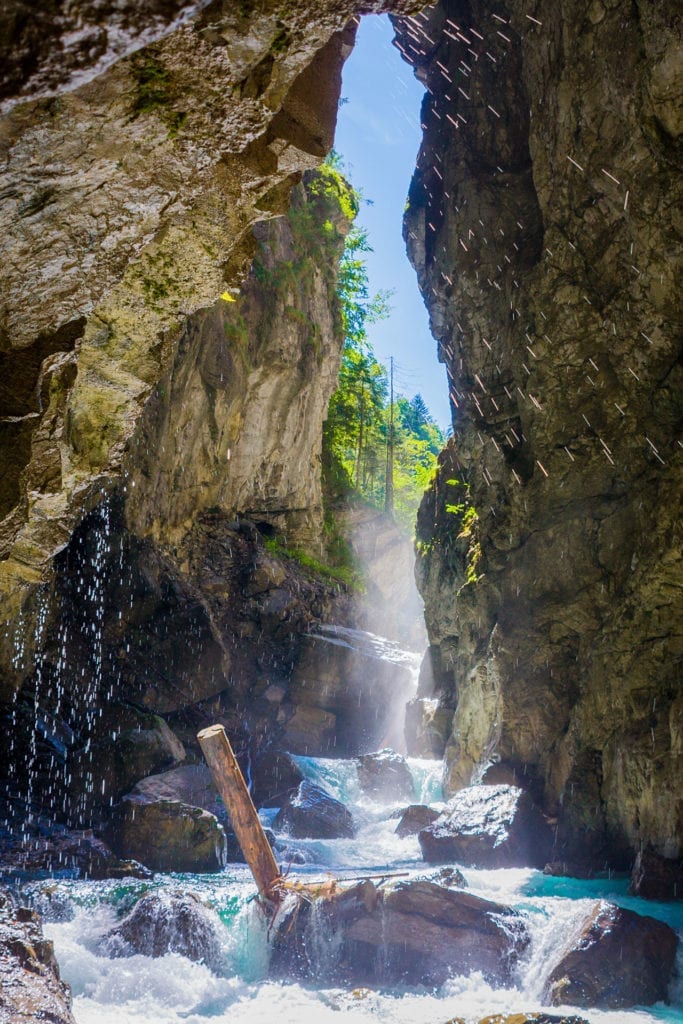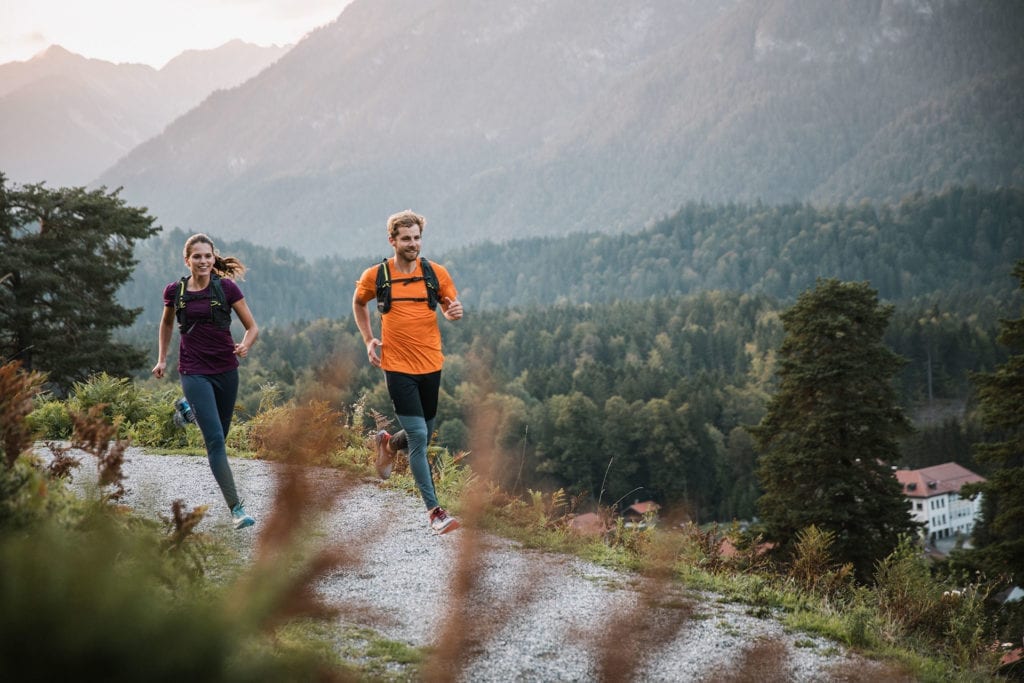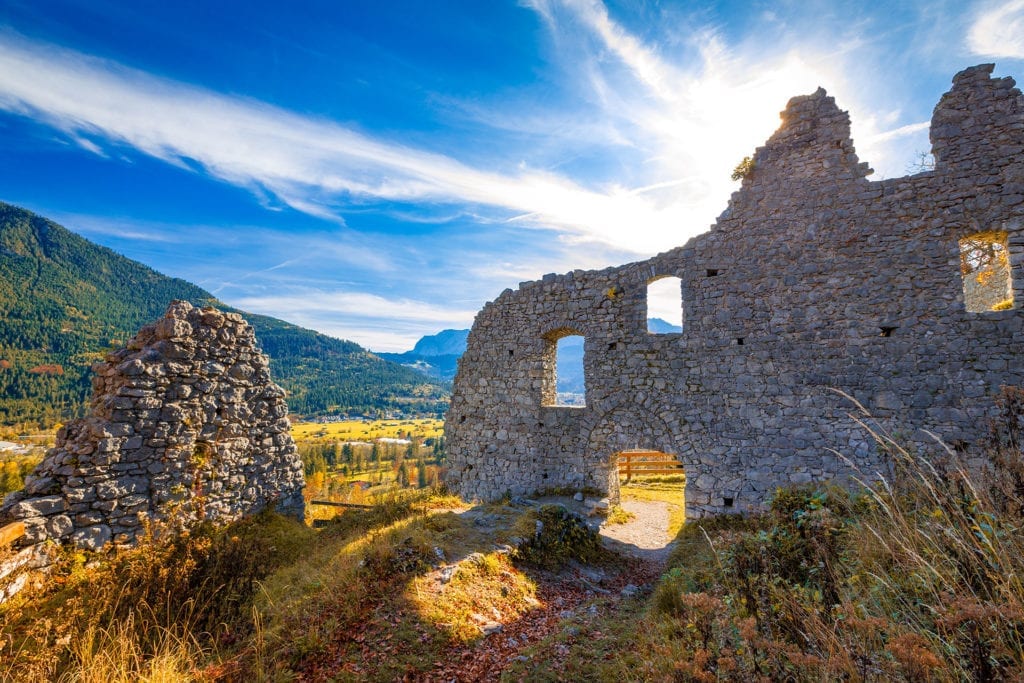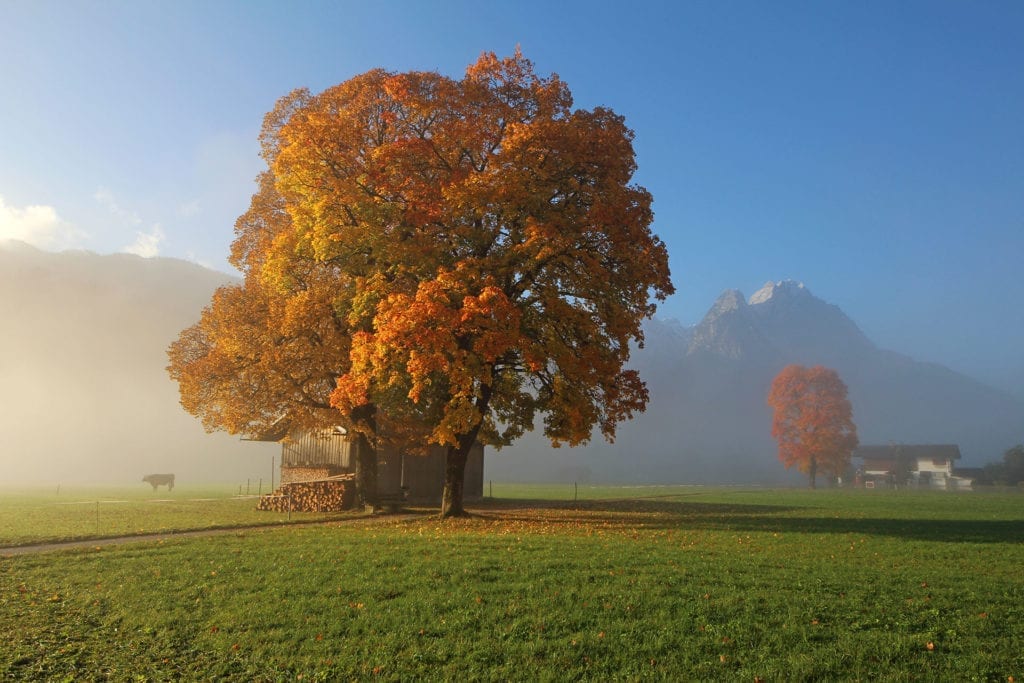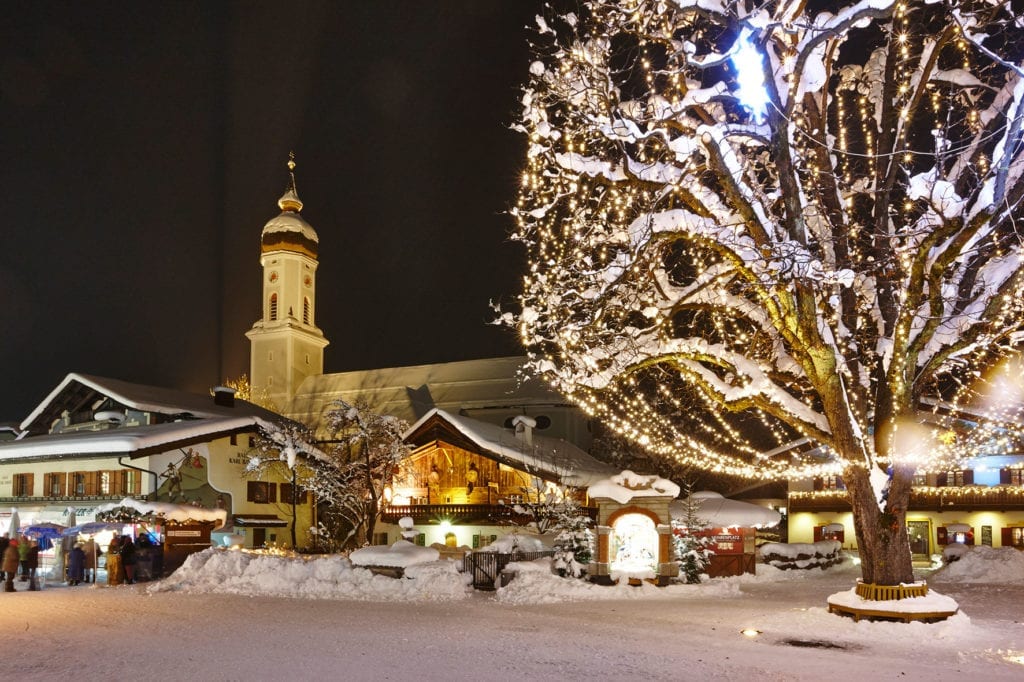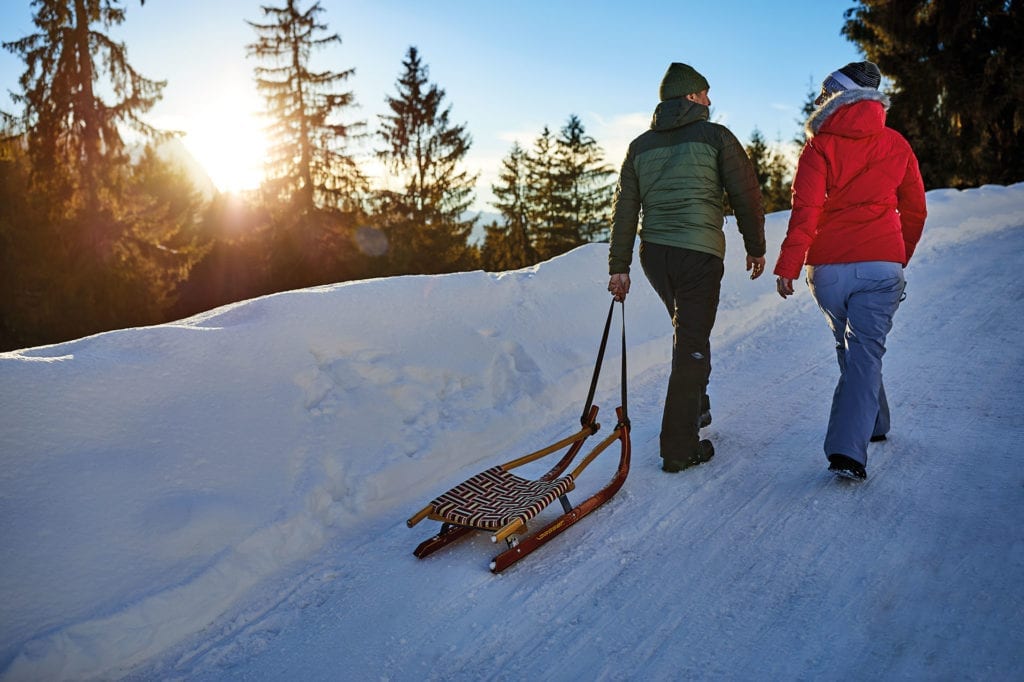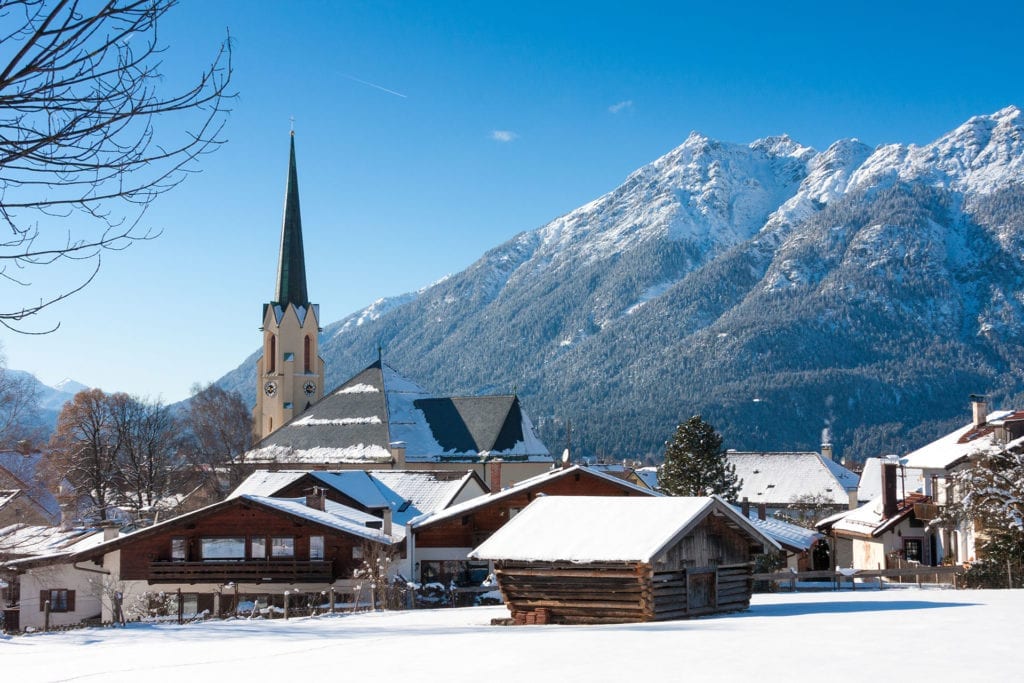South of Munich, Germany, and north of Innsbruck, Austria, lies an enchanting ski resort town, Garmisch-Partenkirchen, formed when the two Bavarian communities united to host the 1936 Winter Olympics.
Now, the town is Germany’s top winter sports playground and a popular year-round destination. Cobblestone streets, half-timbered homes with intricate cutouts, large wooden balconies and gabled pitched roofs are imbued with a liberal dose of gemütlichkeit, a feeling of warmth and well-being, which surrounds the architecture and radiates from the people.
Partenkirchen and Garmisch lie at the foot of the Zugspitze; at 9,718 feet, it is Germany’s highest mountain, accessible by cogwheel train and cable car. Dotted with tiny islands, Lake Eibsee lies just below the Zugspitze, and from its turquoise waters one can almost see edelweiss, the “blossom of snow,” growing in the Alps’ rarefied air.
With this kind of topography, it’s easy to see that in winter, downhill skiing, snowboarding, cross-country skiing, ice skating and sledding abound; in summer months, dry tobogganing, horseback riding, cycling, hiking and swimming (in crystal clear mountain lakes) draw visitors.

Waterfalls and whitewater appeal to Gapa visitors. Photo by Marc Hohenleitner courtesy GaPa Tourism 
Runners enjoy some of the trails in and around the area that locals call GaPa. Photo by Thomas Mazusch courtesy GaPa Tourism 
Photo by Marc Hohenleitner courtesy GaPa Tourism 
Photo courtesy GaPa Tourism 
Photo by Thomas Marzusch courtesy GaPa Tourism
The King’s Castles
The Garmisch-Partenkirchen (what the locals call GaPa) region is steeped in folklore and Bavarian heritage. Nowhere is this more evident than in the castles of King Louis II (often called Mad King Ludwig). He grew up in Hohenschwangau Castle, a Gothic Revival edifice built by his father in the early 1800s near the Austrian border.
Later, Louis II built his masterpiece, Neuschwanstein, on a dramatic cliff above the Pöllat Gorge. Probably the most famous castle in the world, Neuschwanstein looks like it came straight out of a fairy tale; it served as the inspiration for Sleeping Beauty’s castle at Disneyland. Louis designed his dream castle with the help of a theatrical set designer, and the structure itself was continually under construction for years.
The French-inspired Linderhof, the smallest of Louis II’s three castles, is where the eccentric king rowed his golden swan-boat on an underground lake inside an artificial grotto. It’s also the home of the opulent Hall of Mirrors, which rivals its counterpart at Versailles in decorative style and elegance.
All three castles can be reached via public transportation – but make sure you buy tickets in advance, particularly during the summer, when tours often sell out.
Churches and Icicles
Ettal Abbey, a rococo masterpiece near GaPa and close to Oberammergau, was founded by Louis the Bavarian in 1330. The pilgrims’ sanctuary is part of the adjacent Franciscan monastery, where a small community of monks still runs a brewery, hotel and publishing house.
The medieval Old Parish Church of St. Martin in the picturesque historic district features several elegant Gothic murals and stained-glass windows, including a 23-foot-tall depiction of St. Christopher from 1330.
Get a breath of fresh air at Partnachklamm gorge, a geological wonder where constantly dripping water wears away the stone and carves deep canyons. Partnachklamm’s rock faces reach 260 feet tall. In the winter, human-made galleries and passages allow visitors to view the gorge and its delicate, magical icicles.
In town, walk along the charming Ludwigstrasse in the heart of Partenkirchen. This chic boulevard is ideal for shopping and strolling. Exclusive stores share the sidewalk with traditional Alpine inns and first-class restaurants.
In the evening, sample GaPa’s vibrant nightlife. The friendly bars, clubs and discos buzz until the early hours and the casino offers roulette, blackjack and poker.
Suggested accommodations are Dorint Sporthotel and the Werdenfelserei.






















